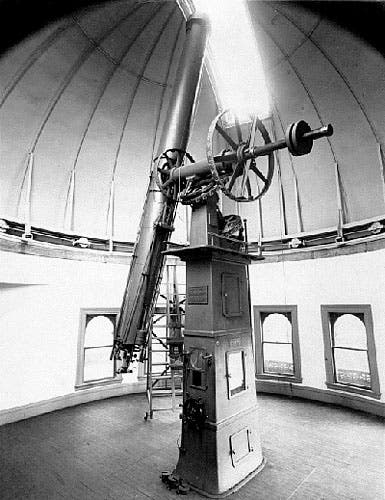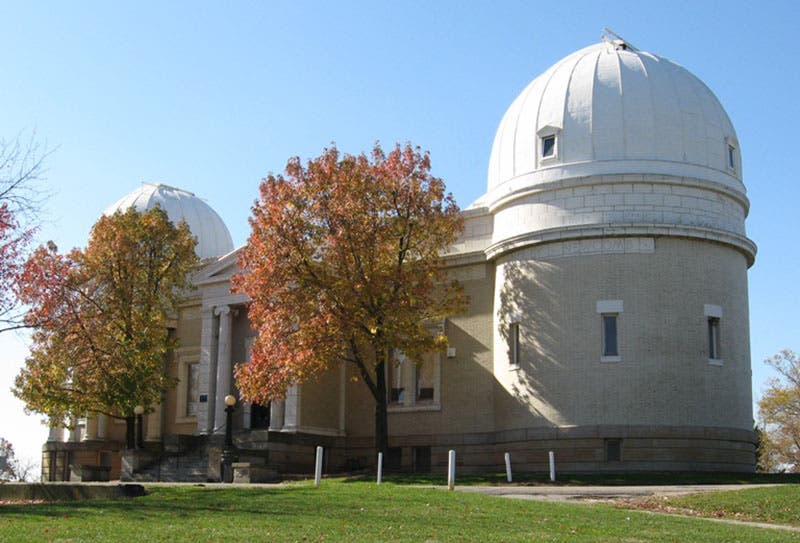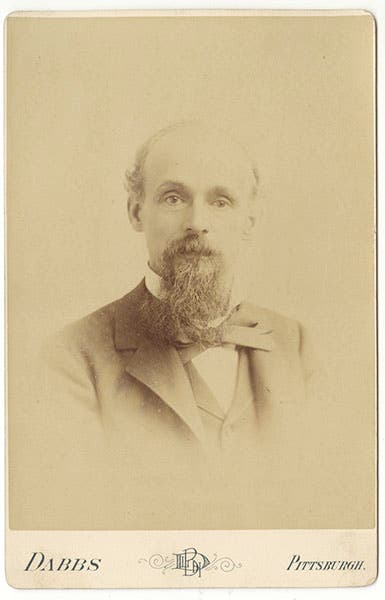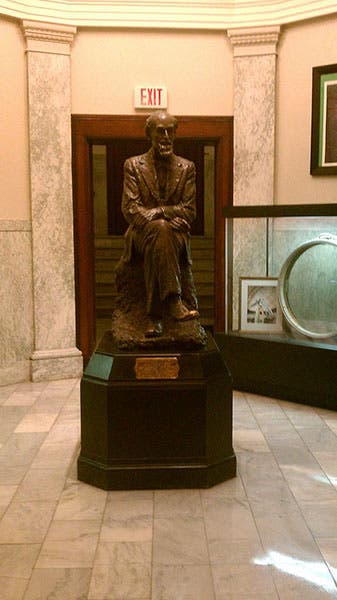Scientist of the Day - John Brashear
John Alfred Brashear, an American optician and telescope maker, was born Nov. 24, 1840. A machinist and millwright by trade, he taught himself to make astronomical instruments in a shed out back of his Pittsburgh home, driven by childhood memories of looking through a traveling telescope. One of his lenses impressed Samuel Pierpont Langley, head of the Allegheny Observatory just north of Pittsburgh; they exchanged letters, and soon Brashear had his avenue into the world of telescope manufacture. By 1881, he was able to give up his job as a millwright and form the John A. Brashear Astronomical & Physical Instrument Works in Pittsburgh, which eventually moved to the Allegheny Observatory grounds. Brashear found another benefactor in Pittsburgh, canal baron and philanthropist William Thaw, who paid for Brashear’s laboratory and then provided him and his family with a house, where he lived until his death in 1920 (Thaw’s heirs continued their father’s patronage of Brashear).
Brashear’s telescope firm was noted for its exquisite optics, producing the finest lenses in the world. Unlike the better known Alvan Clark and Sons of Cambridge, which turned out gigantic lenses for the Lick Observatory and the Yerkes Observatory, each the largest lens in the world at the time, Brashear’s company equipped refractors with lenses that were in the 9-inch to 24-inch range, which were just perfect for college observatories around the United States, and which is where you will find many Brashear telescopes still in use. We show as an example the 16-inch refractor built by Brashear for Carleton College in Northfield, Minn., a lovely instrument (second image, above). There are scores more just as nice across the country.
Brashear did build some large telescopes, and one of the best known is an instrument he manufactured for his home institution, the Allegheny Observatory. Named after his and the observatory’s benefactor, the Thaw Refractor has a 30-inch objective, ground especially to serve as a photographic lens (third image, above). Completed in 1914 and installed in a new observatory building, it has amassed over 110,000 deep-sky photographs over the course of a century of operation that are a treasure trove of astronomical history. The new observatory, built in 1912 (the funds for which were largely raised by Brashear, mostly from Thaw), is still in place and part of the University of Pittsburgh; the Thaw Refractor is under the largest of the three domes, but it is hard to tell from the photo below which dome that is.
We do not have time or space to talk about Brashear’s other activities, but he moved in remarkably high circles for an optical manufacturer. He was on the boards of all sorts of Pittsburgh institutions, including the Carnegie Institute, the Pittsburgh Academy of Arts and Sciences, and was for a time chancellor of the University of Western Pennsylvania (now the University of Pittsburgh), and director of the Allegheny Observatory
When Brashear was constructing a new workshop in 1894, he had a time capsule placed in the walls. The capsule was discovered unexpectedly when the building was demolished in 2015. The copper box contained all sorts of letters (including the first one he received from Langley in 1874), and quite a few photographs. I like the carte de visite above, showing Brashear at about age 50. When the contents of the box was displayed at the Heinz History Center in Pittsburgh in 2016, they devoted a web page to the box that is both illustrative and informative.
A bronze statue of Brashear stands inside Allegheny Observatory.
Dr. William B. Ashworth, Jr., Consultant for the History of Science, Linda Hall Library and Associate Professor emeritus, Department of History, University of Missouri-Kansas City. Comments or corrections are welcome; please direct to ashworthw@umkc.edu.











